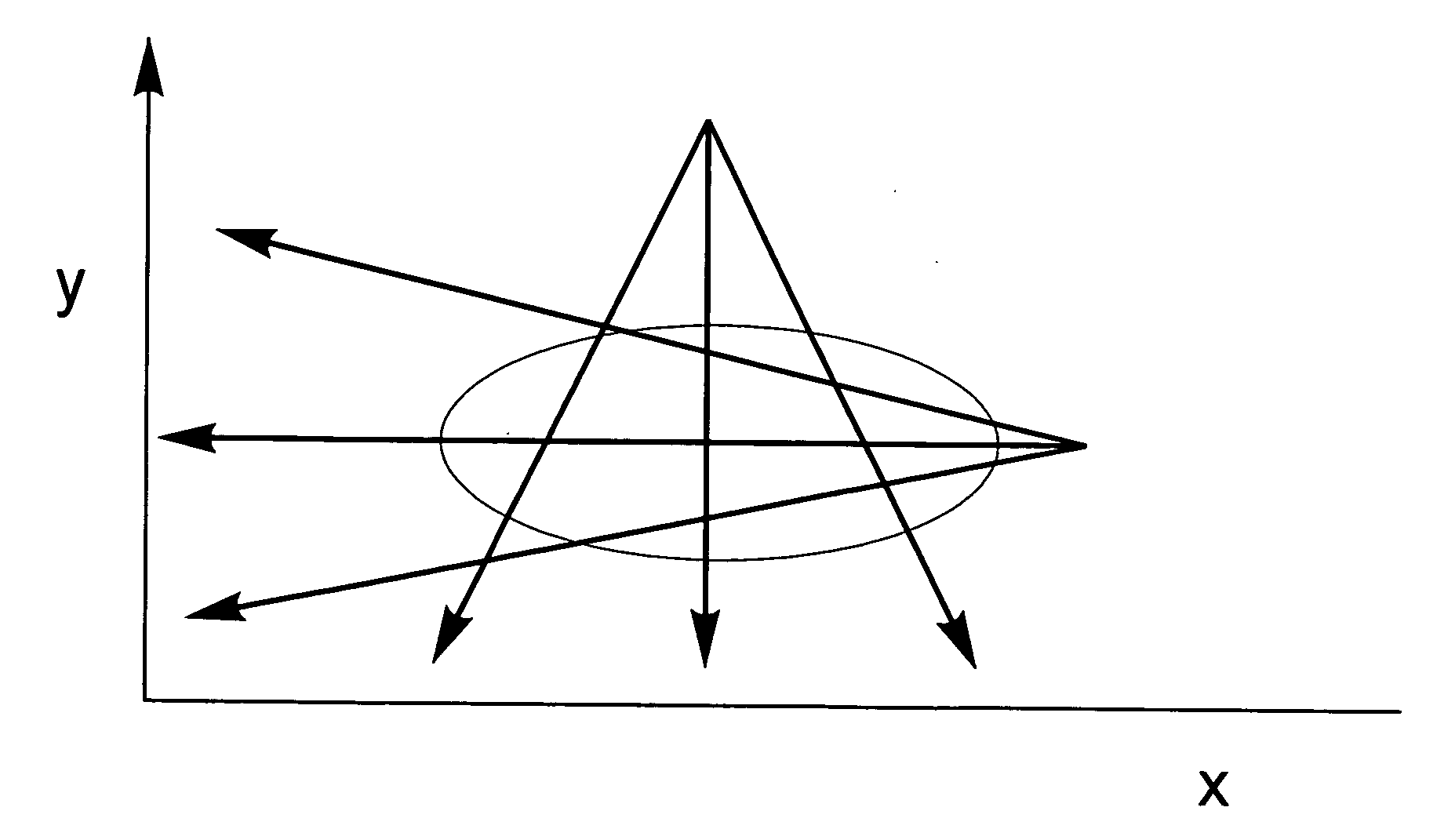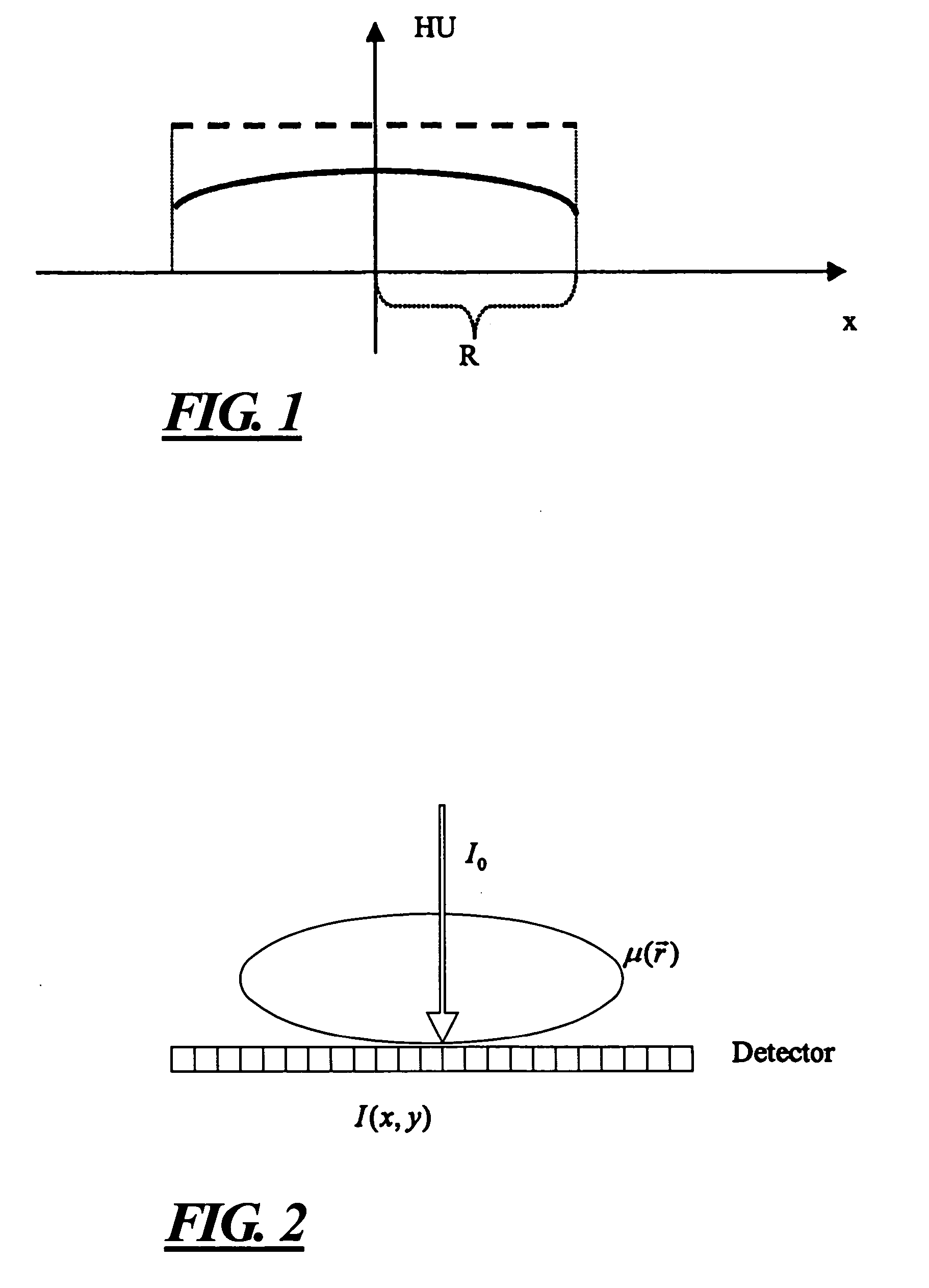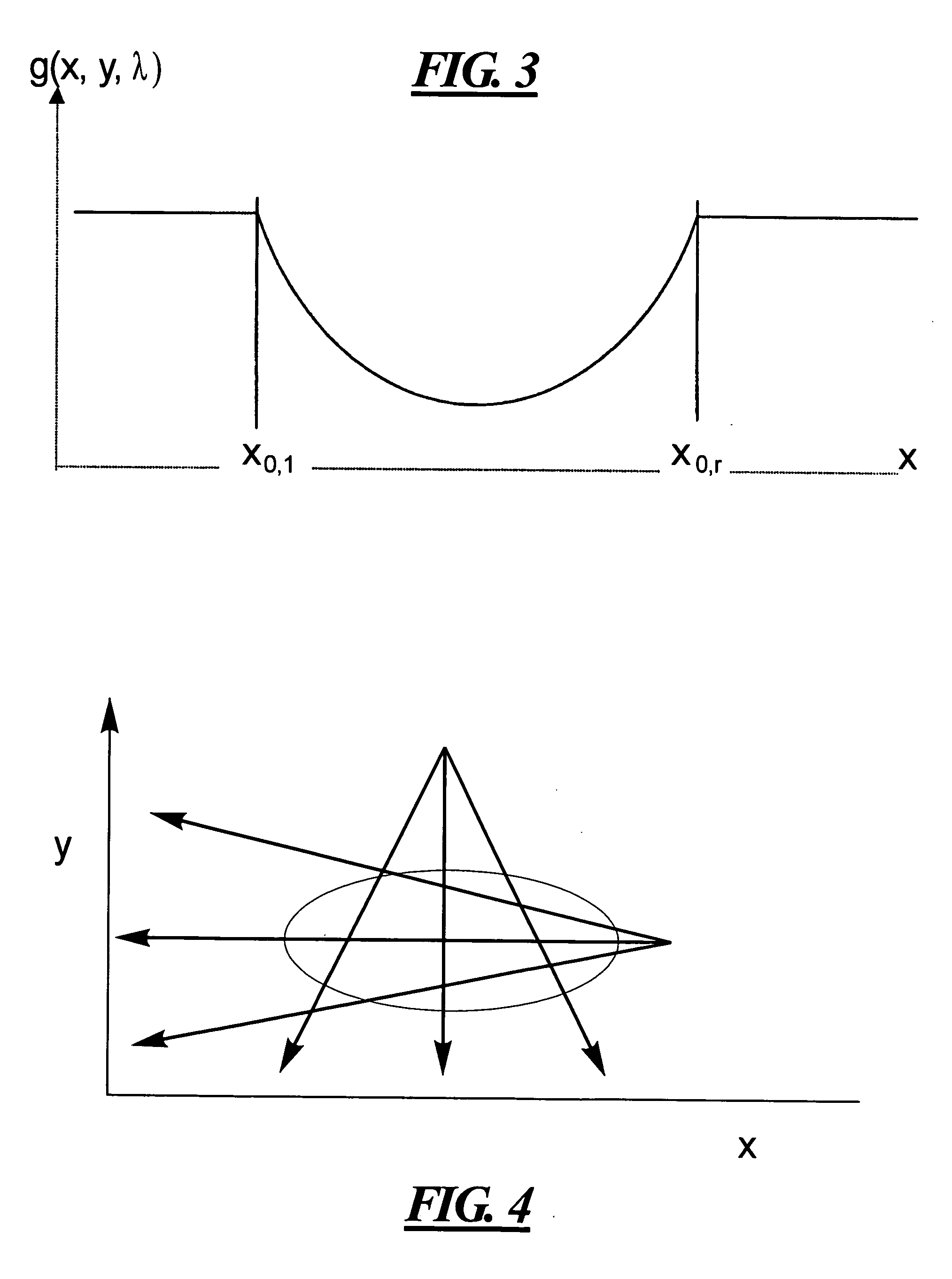Method for correcting image artifacts due to detector overexposure in computed tomography
a computed tomography and image artifact technology, applied in the direction of material analysis using wave/particle radiation, instruments, nuclear engineering, etc., can solve the problem of disturbing capping artifacts in reconstructed images, and achieve simple and efficient correction, improve low contrast resolution in images, and reduce capping artifacts
- Summary
- Abstract
- Description
- Claims
- Application Information
AI Technical Summary
Benefits of technology
Problems solved by technology
Method used
Image
Examples
Embodiment Construction
[0016] The phenomenon of clipping, as discussed above is schematically illustrated in FIG. 1, which shows Hounsfield values for a homogenous cylinder with a radius R along the direction of the x-axis, with Hounsfield values HU along the vertical axis. Due to the above-discussed overexposure, the resulting Hounsfield values of the image reconstruction are smaller at the edges, thereby causing a line under consideration (solid curved line) to exhibit a capping artifact, compared to the dashed line of the image, wherein no capping artifact exists.
[0017] The following provides general background information for use in explaining the inventive method and its application in the field of angiographic computed tomography imaging.
[0018] The input for the image reconstruction algorithms must be line integrals ∫μ( r)ds of the object of interest. Line integrals are defined as follows: ∫μ(r_) ⅆs=ln(l0l(x,y))
wherein I0 is the maximum intensity when no object is present I(x,y) is the meas...
PUM
 Login to View More
Login to View More Abstract
Description
Claims
Application Information
 Login to View More
Login to View More - R&D
- Intellectual Property
- Life Sciences
- Materials
- Tech Scout
- Unparalleled Data Quality
- Higher Quality Content
- 60% Fewer Hallucinations
Browse by: Latest US Patents, China's latest patents, Technical Efficacy Thesaurus, Application Domain, Technology Topic, Popular Technical Reports.
© 2025 PatSnap. All rights reserved.Legal|Privacy policy|Modern Slavery Act Transparency Statement|Sitemap|About US| Contact US: help@patsnap.com



